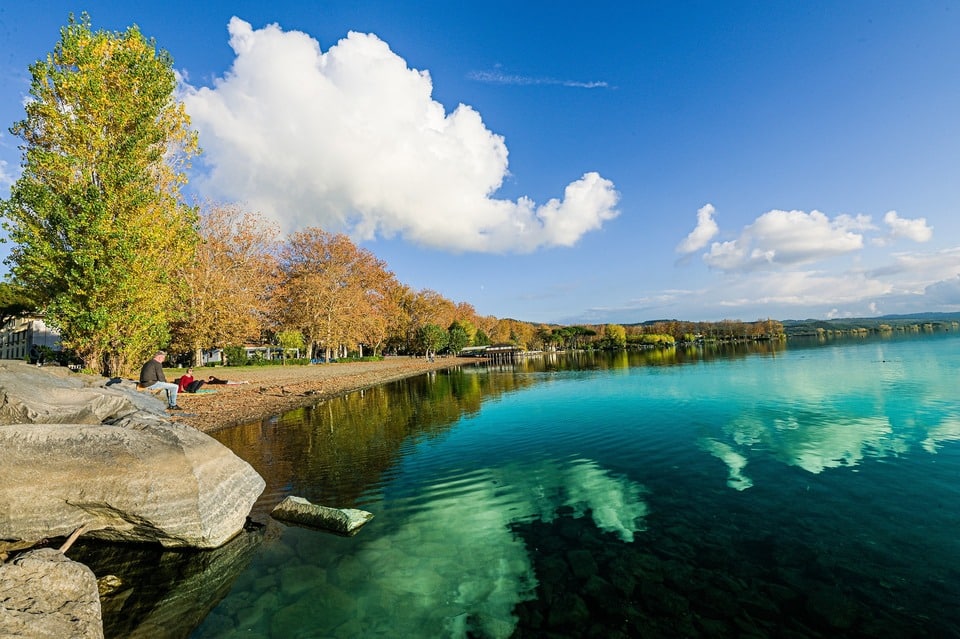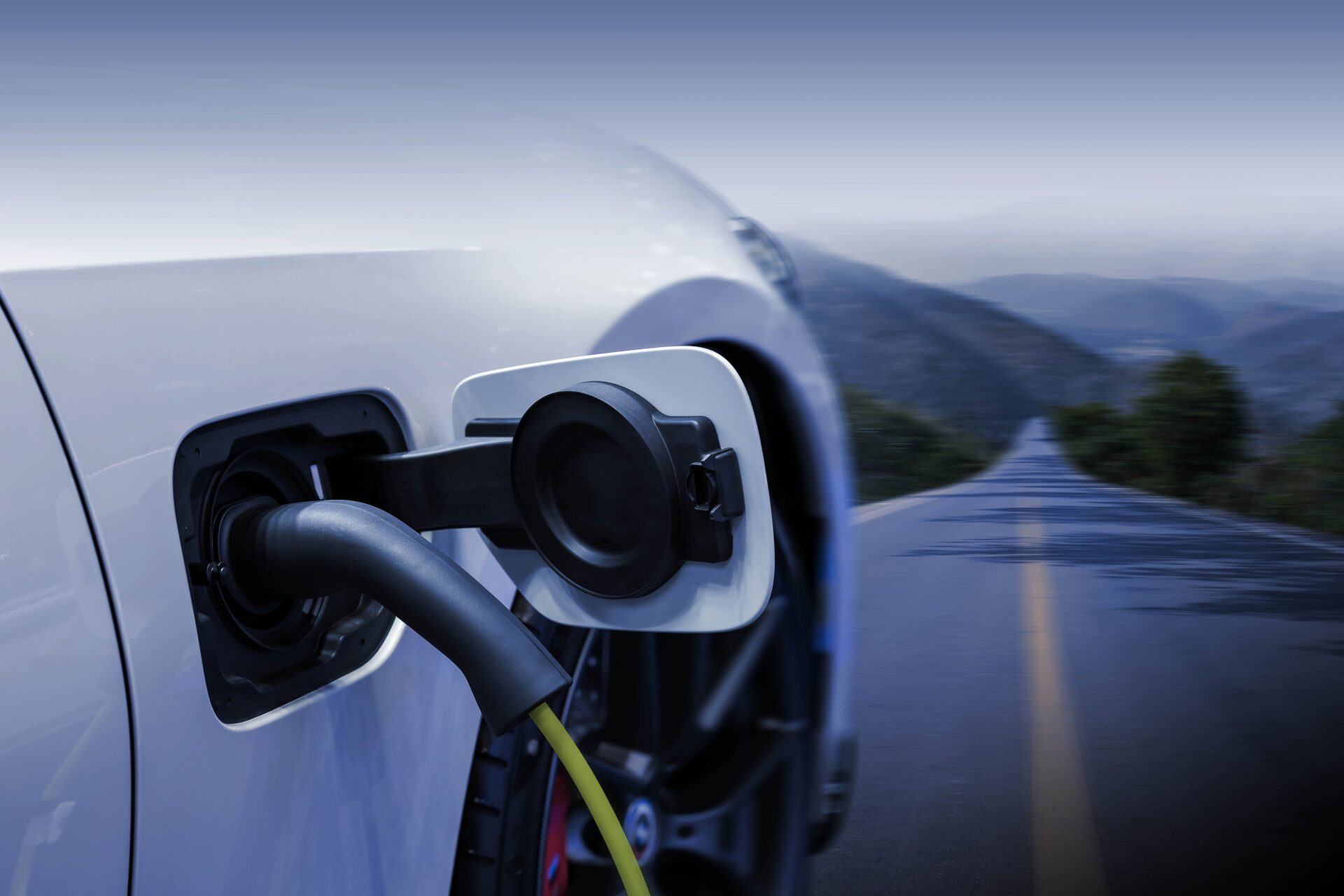You can reach Lake Bolsena from any of the cities in the Lazio region or the regions that border it, such as Abruzzo, Tuscany, Umbria or Campania. The lake is one of Italy’s most celebrated stretches of water, an area that certainly has its tourist attractions but is equally beautiful, especially so in certain times of year.
Day 1: Sutri and Ronciglione
We leave Lake Bracciano to drive to the nearby centre of Sutri, a very old town. One of the more remarkable towns in the area of Tuscia, Sutri is perched upon a spur of volcanic rock and its beauty is apparent to all who see it. The old town centre is stunning, filled with passageways and small squares, where you’ll find many characteristic artisan boutiques, you’ll discover the town’s more charming corners, and you’ll find lots to see.
Among the many religious buildings to enjoy there’s the Co-Cathedral of Santa Maria Assunta, built in the 12th century and consecrated by Pope Innocent III in 1207, which contains an impressive crypt that shouldn’t be missed. Sutri’s other prestigious religious buildings include the Church of San Francesco, founded by the saint in 1222, the churches of San Sebastian and San Silvestro, built in Romanesque style. Time to stop for a delicious plate of tagliolini with mushrooms.
A few kilometres from Sutri is Ronciglione, which we reached after a short, scenic drive. Ronciglione is the backdrop for one of Italy’s most spectacular carnivals, acclaimed for its series of traditional events. The city is built in the Cimini hills, on a volcanic spur set between two waterways, and divided into two separate zones: the most recent, constructed from the 16th century, and the medieval quarter, characterised by narrow streets and dominated by the city stronghold.
We leave our car and explore the city to enjoy the beauty of its views and to breathe in its history. The treasures found in this characteristic city in northern Lazio include the Church of Santa Maria della Provvidenza, dating back to the 11th century, the cathedral of Saints Peter and Catherine, dating from the 17th century, the Renaissance municipal palace, the municipality’s administrative offices for two centuries, Palazzo Virgili and the Grand Fountain, or Unicorn Fountain, in Piazza Principe di Napoli, constructed from sandstone.
Its many picturesque views have ensured that Ronciglione has appeared in many film and TV productions, and it will surely present special sights to anyone exploring its hidden gems. For dinner, we chose one of the typical local trattorias where we treated ourselves with a plate of pappardelle in venison sauce and mixed fried vegetables. After, we spent an unforgettable walk in the peace of the city.
.
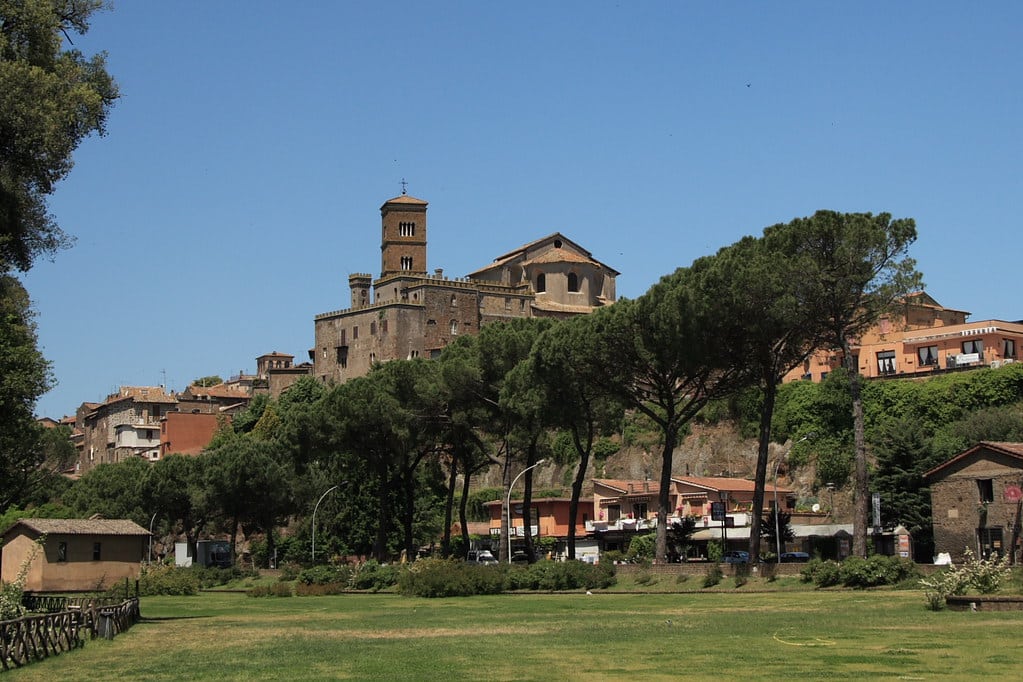
Day 2: Caprarola and Viterbo
After an afternoon and evening spent in wonderful Ronciglione, we set off for Caprarola, taking a longer route so we can skirt the waters of Lake Vico, a volcanic basin that boasts being the highest of Italy’s great lakes at 507 metres above sea level.
Beech forests, rushes and beaches are what make this area particularly valued by nature lovers. It’s populated by a rich fauna which includes amphibians like green frogs and the tree frogs, reptiles like grass snakes, mammals like wild boar, foxes and badgers and, because the water quality is good, fish like whitefish, perch and agone.
We arrive in Caprarola, a stunning town that rises up 520 metres in an area that was once Etruscan. The town is one of the more impressive planning feats of the 16th century, which is characterised by the imposing Palazzo Farnese, where we head to.
This genuine Renaissance-Mannerism architectural treasure was designed by Jacopo Barozzi of Vignola and ordered by Cardinal Alessandro Farnese, who was appointed Pope Paul III whilst the palazzo was being built. The sumptuous interiors of the palazzo are filled with frescoes and decoration that make it one of Lazio’s real architectural gems.
Among the palazzo’s enchanting areas are the Stanza dei Fasti Farnesiani (Hall of Farnesian Glories), with frescoes depicting the life of the Farnese family, the Scala Regia (King’s Staircase), and the Stanza delle Carte Geografiche or Mappamondo (World Map Room), with frescoes by Giovanni Antonio da Varese. We stop in one of the area’s trattorias to sample the bruschetta, local sliced meats and a mixture of goat’s and sheep’s cheese with a good glass of Cerveteri Doc red wine.
We leave glorious Caprarola and head for Viterbo, an ancient city with an interesting old centre that dates back to medieval times and is surrounded by walls built in the 12th century. After driving more than 150 km, we leave the car charging at Via degli Etruschi, and head off to discover the city. The real heart of the city can be found in the 13th century areas of San Pellegrino and Piano Scarano, amidst their enchanting passageways and small squares.
From the Cathedral of San Lorenzo to the Church of Santa Maria Nuova, from the Church of Sant’Angelo in Spatha to the Church of Santa Rosa, from the Palazzo dei Papi (Papal Palace) to the Palazzo dei Priori, from Palazzo Farnese, built in the 13th century, to Palazzo Poscia, Palazzo degli Alessandri and Palazzo Chigi, built in the 15th century, Viterbo is a triumph of art, an emotional voyage to the past.
Romanesque, Gothic and Renaissance churches, tower houses and buildings constructed for nobility are dotted around the city, demonstrating the important political and economic role the Viterbo played between the 12th and 14th centuries. Alongside art and culture, visitors can splash out on something from one of the centre’s boutiques. At dinner, we indulged in a delightful plate of tagliatelle with wild boar and sliced steak with mushrooms.
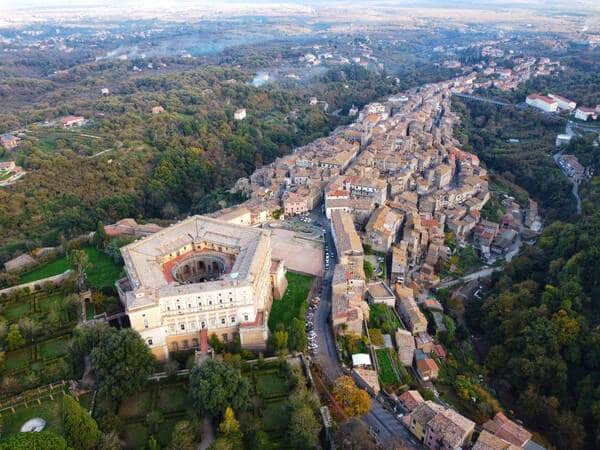
Day 3: Viterbo, Montefiascone and Bolsena
We continue our tour of Viterbo the following morning. The Papal Palace, the Cathedral sacristy and the Colle del Duomo Museum will all allow us to appease our desire for all things beautiful, historic and artistic. Our morning’s itinerary begins at the Colle del Duomo Museum and continues to the Cathedral of San Lorenzo and the monumental sacristy completely covered in walnut and gold with frescoes on the vault.
From the Papal Lodge, built in 1267 and featuring a series of trilobed arches that framed the scene from Piazza San Lorenzo, to the majestic Aula del Conclave (Conclave Chamber), so named because it was the site of the first and longest conclave in history which lasted 33 months, this morning’s experiences have filled the eyes and the heart with joy. We had a light lunch of mixed fresh vegetables and vegetables in oil with sardines and goat’s and sheep’s cheese.
We leave Viterbo and make our way to Lake Bolsena. We stop at Montefiascone, which the Etruscans considered to be a sacred place and is the site of the Papal summer retreat. We were impressed by its dominant position at the highest point around Lake Bolsena.
We pause at the ruins of the Papal Stronghold, a fort situated at the summit of a hill which provides a breath-taking view. We didn’t forget to visit the cathedral, whose cupola dominates the old centre. It houses frescoes and sculptures, and a treasured crypt. For dinner, we chose a classic dish from the area, spaghetti cacio e pepe with Roman pecorino cheese and a tasting dish of mushrooms and potatoes.
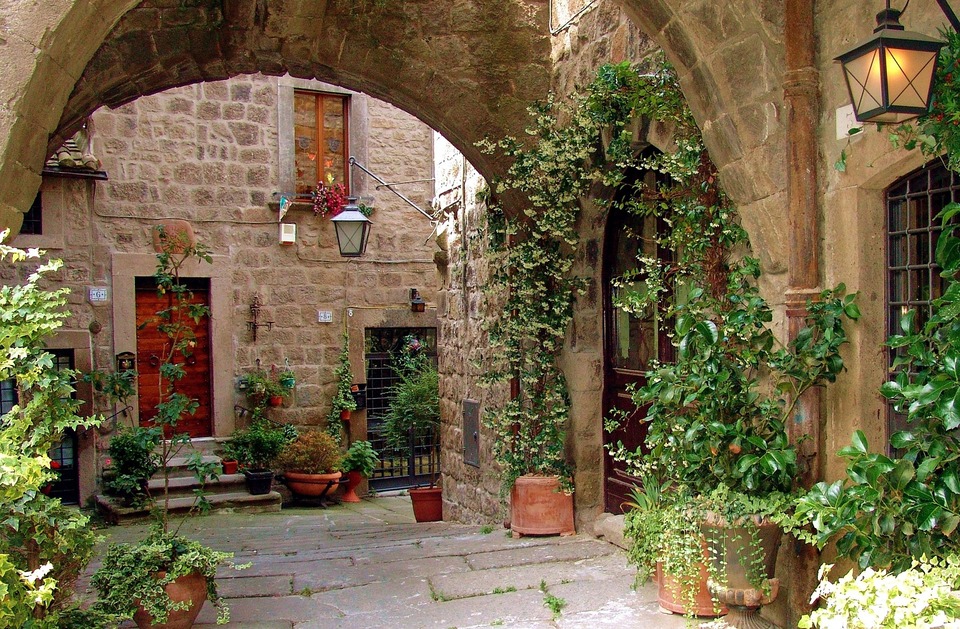
Day 4: Bolsena and his village
We reach the shores of Lake Bolsena with the splendid views offered by Montefiascone the previous afternoon still fresh in our minds. We reach Bolsena with a view over the waters of one of the world’s cleanest lakes. Situated on a hill, this is one of Tuscia’s more traditional towns. A walk through the town offers enchanting views of the Monaldeschi stronghold, which today houses the Lake Bolsena Area Museum, the Minster of St. Christina, the Church of San Francesco, the Palazzo del Drago, which holds significant frescoes, and the 13th century Palazzo Ranieri.
We had lunch in town with Meuniere whitefish and a fresh glass of Cerveteri Doc white wine. For the last afternoon of our journey, we opted to take a boat trip on the calm waters of the lake. With our gaze fixed first on Martana Island, then on Bisentina Island, we enjoyed the perfume of the waters and the view of the towns that frame them, our minds still crammed with the memories of everything that these intense days travelling from the heart of Rome to Bolsena have offered us.
A final dinner before leaving for home: a rich tasting board of cured meats and cheeses, hazelnut pastries and a good glass of Aleatico di Gradoli Doc have given us a pleasurable end to our interesting and pleasurable trip to Lazio.






